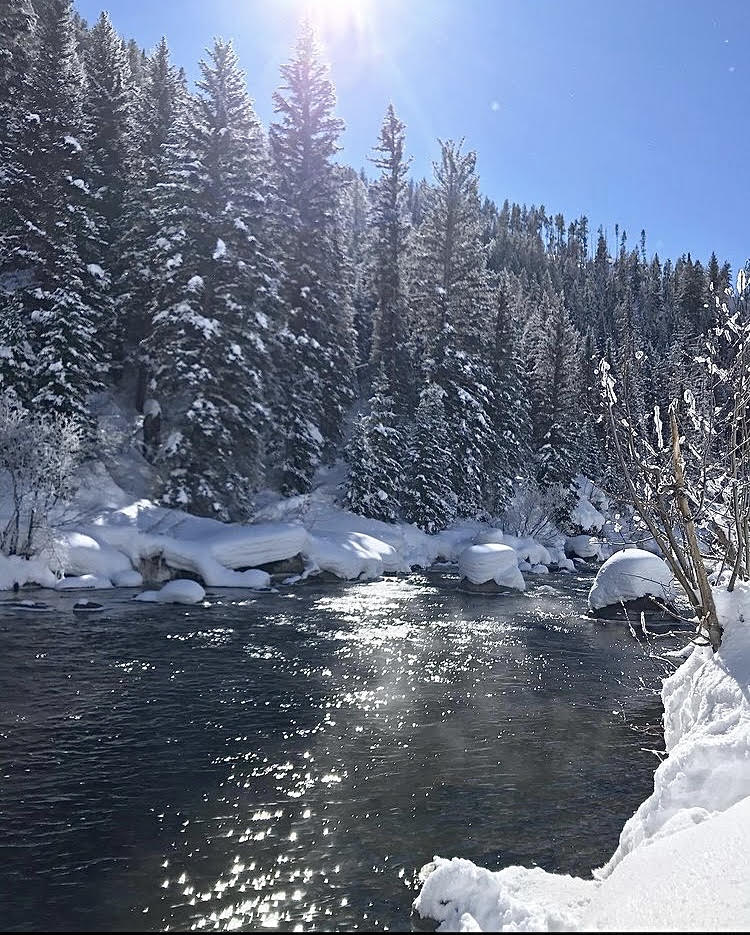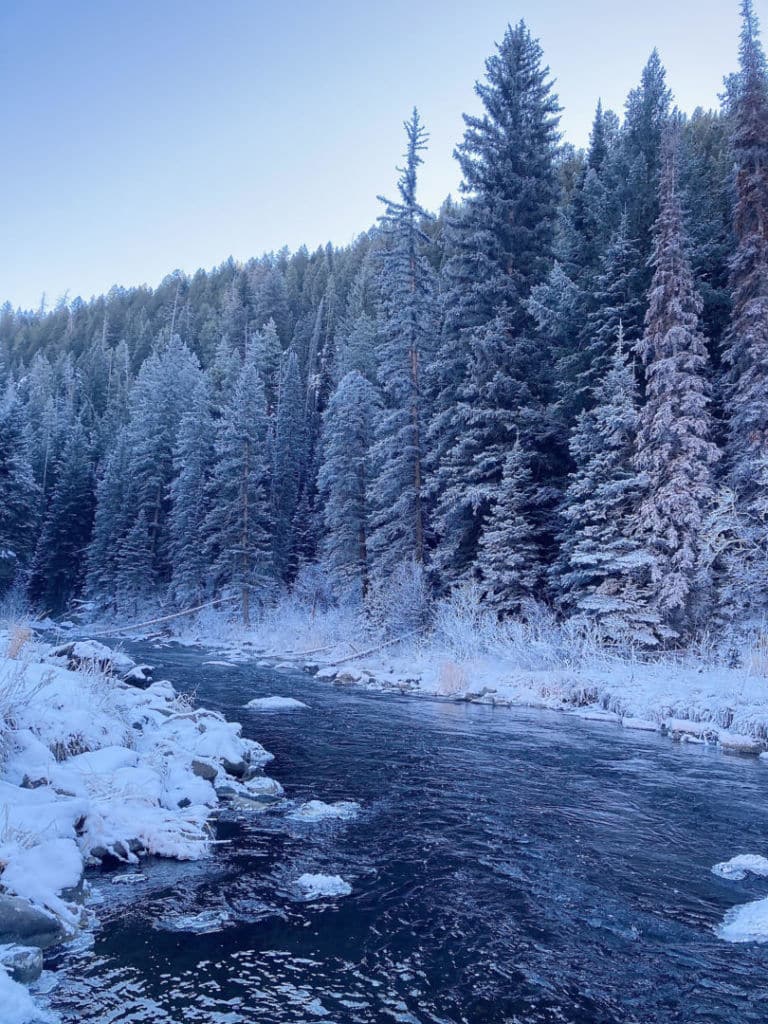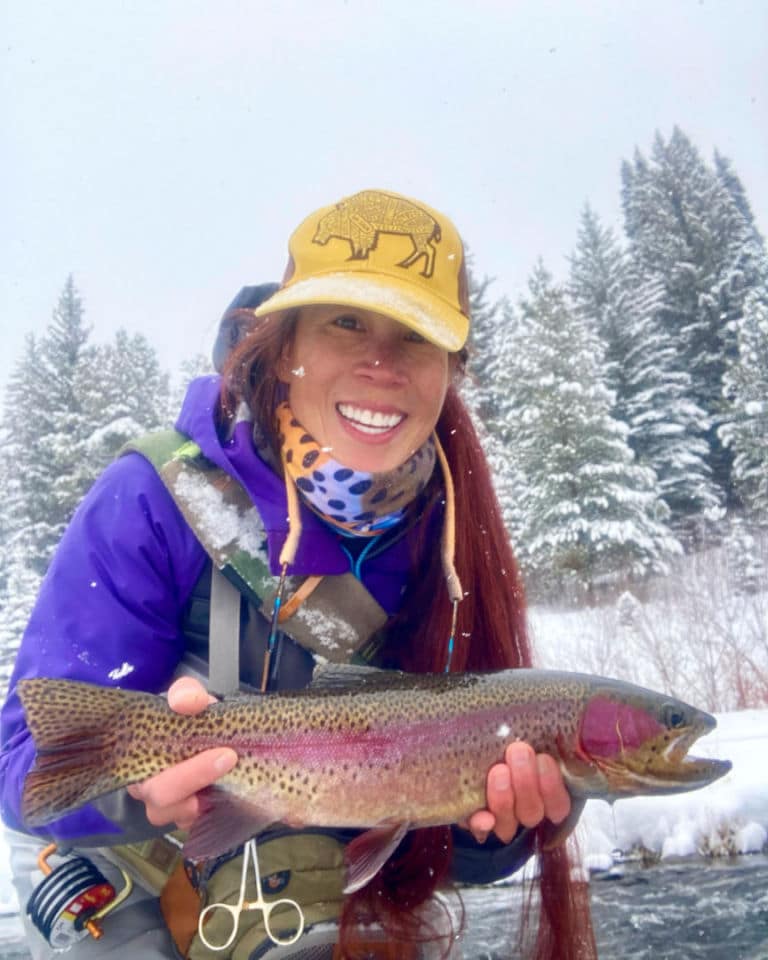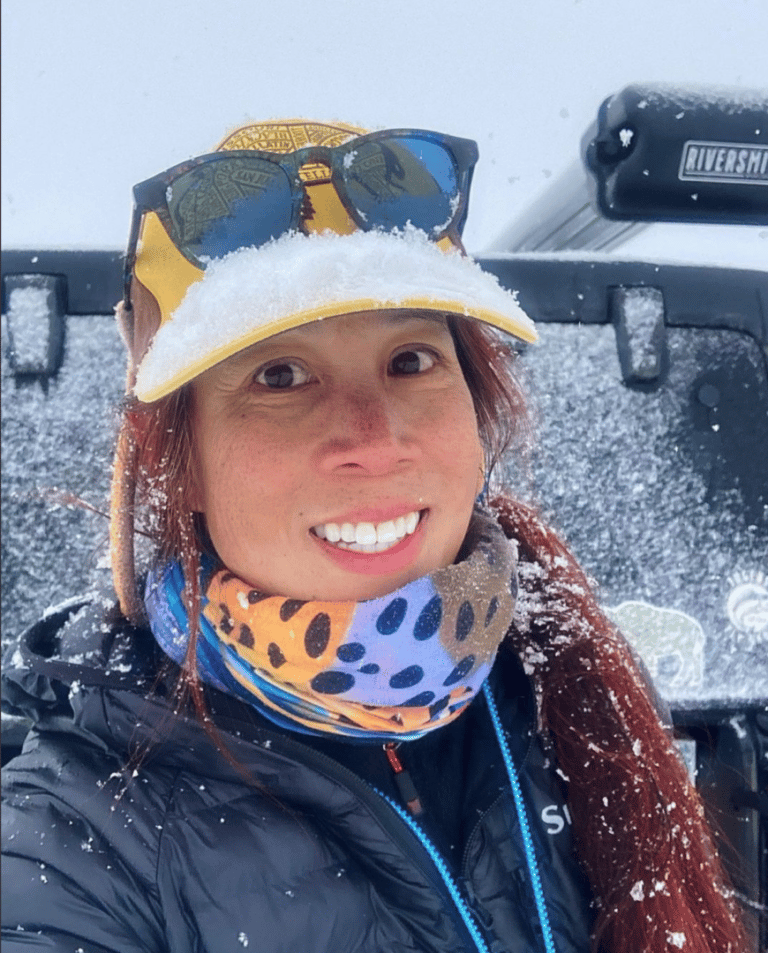
The winters in Colorado are picturesque of wilderness mountains blanketed with glistening snow and featureless skyscapes. The air is a frozen lace on my eyelashes, delicate and cold. Winter is such crystalline joy, the brilliant rays that show the uniqueness of every snowflake. Winter fly fishing may not be for everyone, but it is marvelous for the venturesome angler willing to put on some additional layers. It can be an extremely rewarding experience with few people on the rivers, the enjoyment of beautiful, wintry scenery, and the stunning trout.
By United Women on the Fly Blog Contributor Cat Toy (she/her).
Waders and boots
A high quality, durable wader with a multi-layer system made with a permeable shell to help keep you warm and dry. Be certain winter layers will fit inside your fishing waders with function and comfort. Wader boots should fit comfortably with winter socks so blood can flow to your feet and toes to stay warm. Felt soles are not recommended due to snow clumping. Rubber-soled boots are a must.
Constriction
Layering smart should be comfortable and to not cause constriction and hampering of movement. Constriction will cause poor circulation which in turn results in feeling cold. A set of happy feet works with a comfortable two-sock system with a synthetic liner sock of poly/nylon is useful to help wick away moisture away from the skin. Over the liner, a midweight or heavyweight wool sock for warmth.
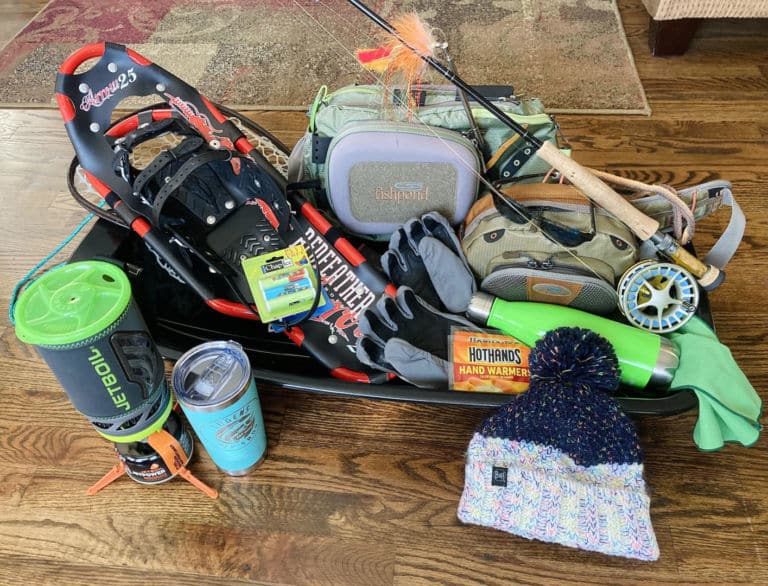
Fly Fishing Gloves
It is a great investment for some descent cold weather fly fishing gloves. Gloves can be complicate to fish with, but absolutely necessary. There are many glove options available from fingerless, to half-finger, and full-fingered gloves. Choose the winning glove to add warmth, dexterity, and the ability to use your finger tips for the delicate fly tying. Some winter fly fishing gloves have compartments to slip in hand warmers. Air-activated hand warmers can emit heat for up to 10 hours. Bring extra sets of hand warmers in case one plops in the water. Always, always take your gloves off when handling fish.
Hat
We all have our beloved lucky fly fishing hat. Wear it to keep the sun out of your eyes and cap it with a cozy, warm, wool beanie, or go with a beanie with a built in visor.
SUNSCREEN
The presence of snow can nearly double the amount of ultraviolet radiation that hits your skin. Sunscreen is a must to protect your skin from the sun as well as those overcast days. On overcast days, your skin is still absorbing up to 80% of the sun’s rays. If the winds pick up, sunscreen will protect you from windburn. Neck gaiters add warmth as well as another option for sun protection.
Sunglasses
Protect your eyes from the harmful sun ultraviolet rays with a good pair of polarized sunglasses. A pair of quality polarized sunglasses will reduce the amount of water surface glare throughout the course of the day. It will be less strain and squinting for your eyes, the opportunity to find the fish, and to see the underwater river structures.
Pack Twol
Another warm preparation for cold fishing is having a PackTwol, a fantastic quick drying microfiber towel great for the use of drying your hands after handling fish. It’s a compact tote bag towel that is super absorbent, and you can clip to your vest, hip, or waist pack. They dry 70% faster then a cotton towel. It may get pretty fishy from frequent usage, but the towel stays fresh with the polygiene odor control feature. Get one of these towels!
Setting Up Rods
Rig up your rods from the comforts of your warm home before heading out to the river. Bring one rod for nymphing and 2nd rod for dry fly fishing. You can encounter hatches from time to time with winter fly fishing. I will alternate back and forth from nymphing, to dry fly, back to nymphing and experience a greater number of catches. It helps to target other fish with changing it up for the fish cuisine.
Fuel yourself
I hike in a distance to the winter fly fishing far from my car. Therefore, I pack food and water being away all day. Water stays warm or hot in a stainless steel container made of a double-walled vacuum insulation. A small portable cooking system like the Jetboil is easy to pack with and having the capability to boil water as quick as 100 seconds for hot chocolate, soups, and dehydrated meals. Don’t forget to throw a spork in your pack.
Chapped Lips and Ice Over Guides
Fishing on those frigid days can be frustrating at times when your rod guides and tip keep icing up. My favorite, inexpensive tricks of the trade is Chapstick. It won’t prevent ice buildup, but it will help delay the amount of ice build up on your guides. Do this preparation along with rigging up your rods at home. Apply a small amount of chapstick on each guide and rub in with your finger tips. Reapply out on the river when ice begins to build up.
weather Conditions
Know your weather conditions ahead before your winter fly fishing trip. Be aware of temperatures, any changes of conditions, wind, and the possibility of precipitation. This will greatly aid in your preparation of how to dress, or to not go at all. Safety is first and foremost your number one concern before anything else. Always have a family member or friend know where you are going as well as a check in time of your return.
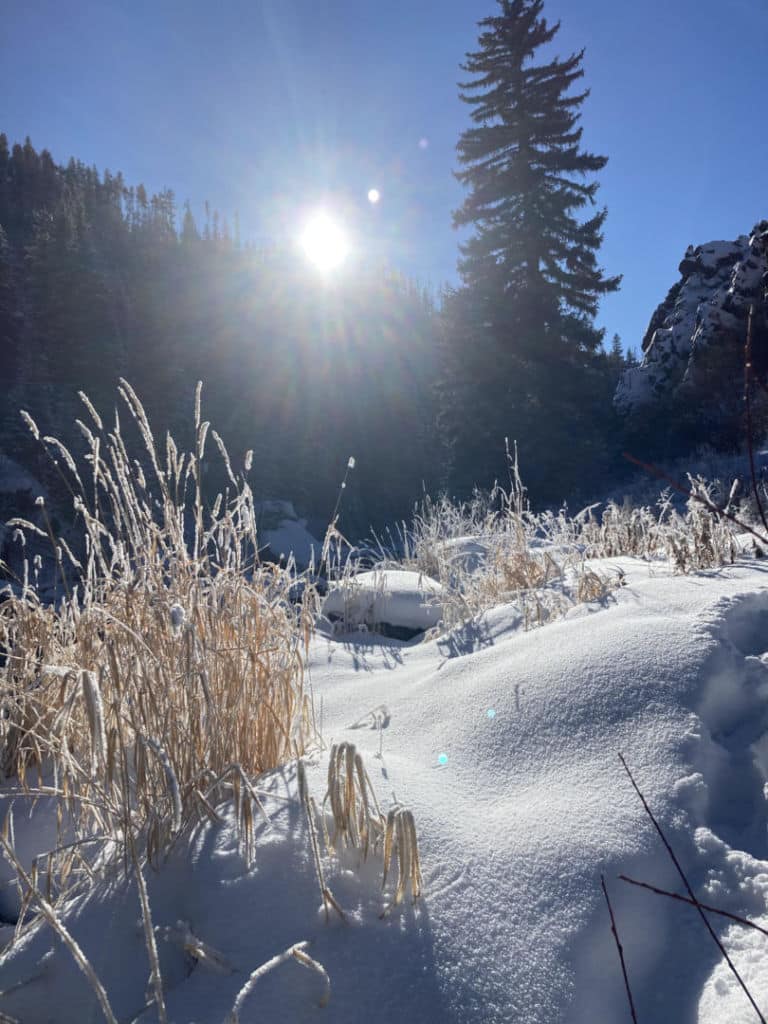
Sunset
Along the lines of weather, I will always take the time to research the sunset time. Should you have to hike back to your car, to give yourself plenty of light upon your return. You may see some fish rising activity mid-afternoon on sunny days. On some of those gray, calm, peaceful snowy days, the fish may rise for hours. Afternoons are usually the more productive times of fishing being the warmest time of day. The fishing can be amazing during this time, but remember to keep an eye on the time. Your car and safety awaits.
Fish Winter Water
Fishing during the winter is different from the warmer seasons. Conditions will vary with catching fish this time of year. You will hardly find fish in the faster water until springtime when temperatures warm up. The fish can be found in sleepier water, deeper fish pots or pools. Fish will have a slower metabolism during winter months. They expend little energy as much as possible for a meal. Set the hook with even the slightest pause. Quickly return fish into the water when temperatures are well below freezing. Cold temperature exposure can be harmful to the eyes, gills, and soft tissue of the trout.
Magnetic Tool
A nifty tool I always carry especially if there is a lot of snow, is a telescopic magnetic pick up tool. Pick one up at your local auto store. This gadget fits easily in your fish bag, If you drop your winning fly in deep snow, pull out this tool and wand the general vicinity. This tool will find your fly in the deep snow, or in shallow water while wading.
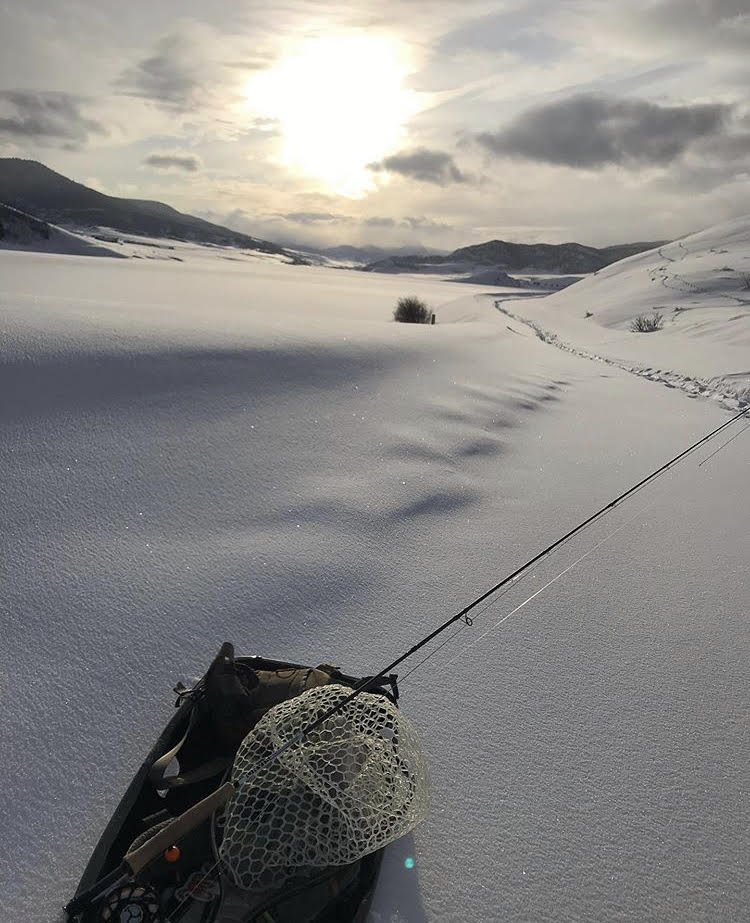
Prepare for the Snow
Under such extreme winter fly fishing conditions, I have snowshoed into a river destination hauling a small fish sled with my gear. When a recent major snowstorm opens to a day of sunshine, considering winter fishing under these conditions requires careful preparation. Make this adventure in pairs. A good set of snowshoes that will fit beneath your wader boots, a backcountry avalanche shovel, and a beacon. Check in with the park ranger, family, or friends of your whereabouts and safety. Deep snow conditions require caution with soft covered pockets from bushes or trees that may give way. Your sled and backcountry shovel comes handy to aid in getting out of the snow hip or waist deep. Don’t be alarmed. Fishing adventures like this are invigorating and fun with the earned mountain experience and the plentiful catches of trout.
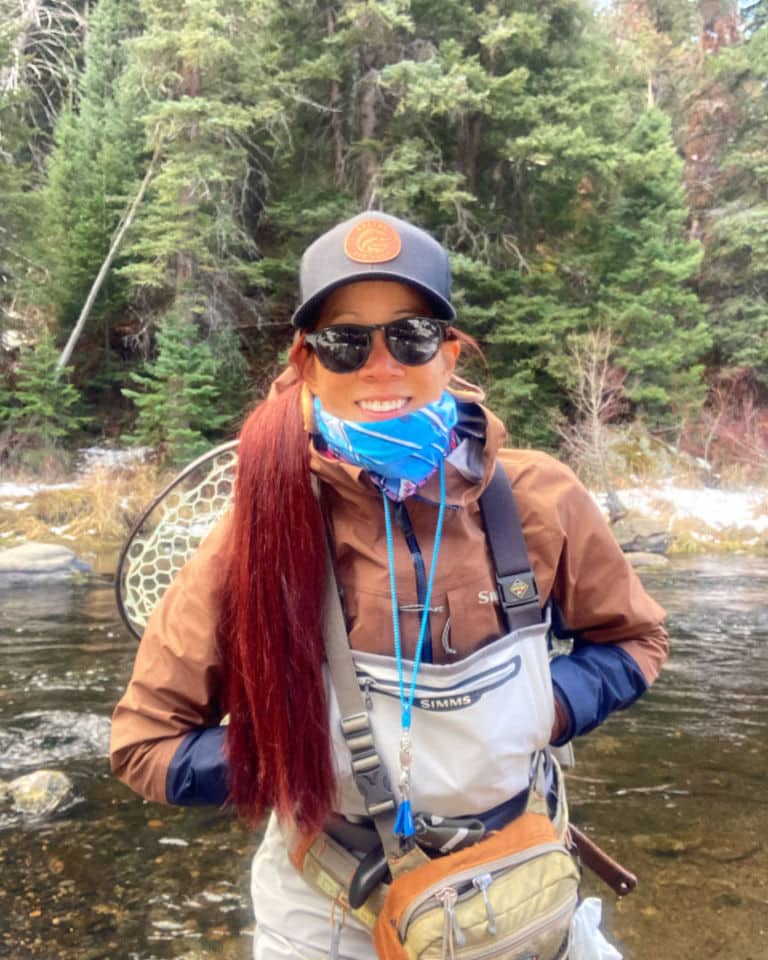
Dress the Part - Base Layer
The prepared angler needs to dress wisely for the part. Winter layers begin with a first base layer next to skin made of a wool/synthetic or silk blend that have moisture wicking capabilities. If possible, avoid cotton clothing. Cozy sweatshirts, jeans, and cotton socks under waders are counterproductive because they do not remove moisture leaving you bleak and the inability to stay warm.
Mid Layer
Layers on top of your base layer are articles of clothing made of polyester, wool, and other synthetics. Fleece pullovers and fleece wader pants or merino wools are exceptional choices because they are lightweight, toasty, and breathable. These layers are advantageous in trapping warmth and with the function of also wicking away moisture.
Insulating Layer
To top your inner layers, an insulated hooded puffy is another quality layer that adds wind and weather resistance. It is the best way to counter the winds and below freezing temperatures. It is a windproof outer layer that helps to trap warmth and block the elements. The hooded puffy also is very easy to stow away if you get too warm.
Outer Layer
Your outer layer is your first layer of defense. If you really want to stay warm, make your outer layer a wind and waterproof shell. The ideal jacket will have a hood and vents around the armpits to allow sweat to evaporate from your interior layers. I prefer an outer shell made of specially engineered materials such as Gore-Tex. This quality material is built for wet protection from the snow, windproof, and breathability
Conclusion
Winter fly fishing can be blissful and rewarding. Dress warm, be prepared with your gear for the adventure. Bring snowshoes for the deep snow. Setting into the spirit of winter really can mean no crowds with the definite angler’s dream of fish galore. Stay warm and enjoy winter fly fishing!
